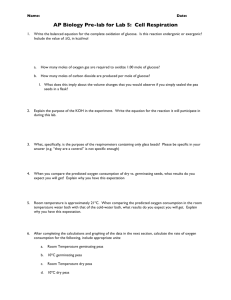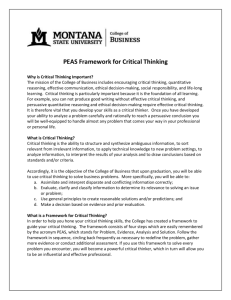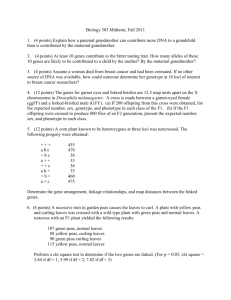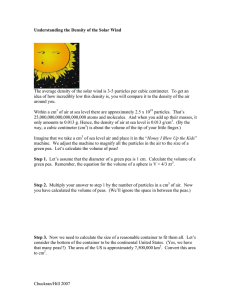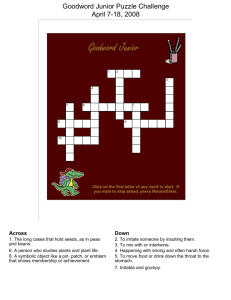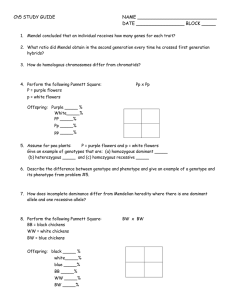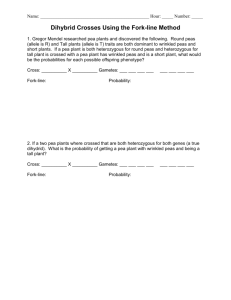Quantum Mechanics and Split Peas I. Introduction
advertisement
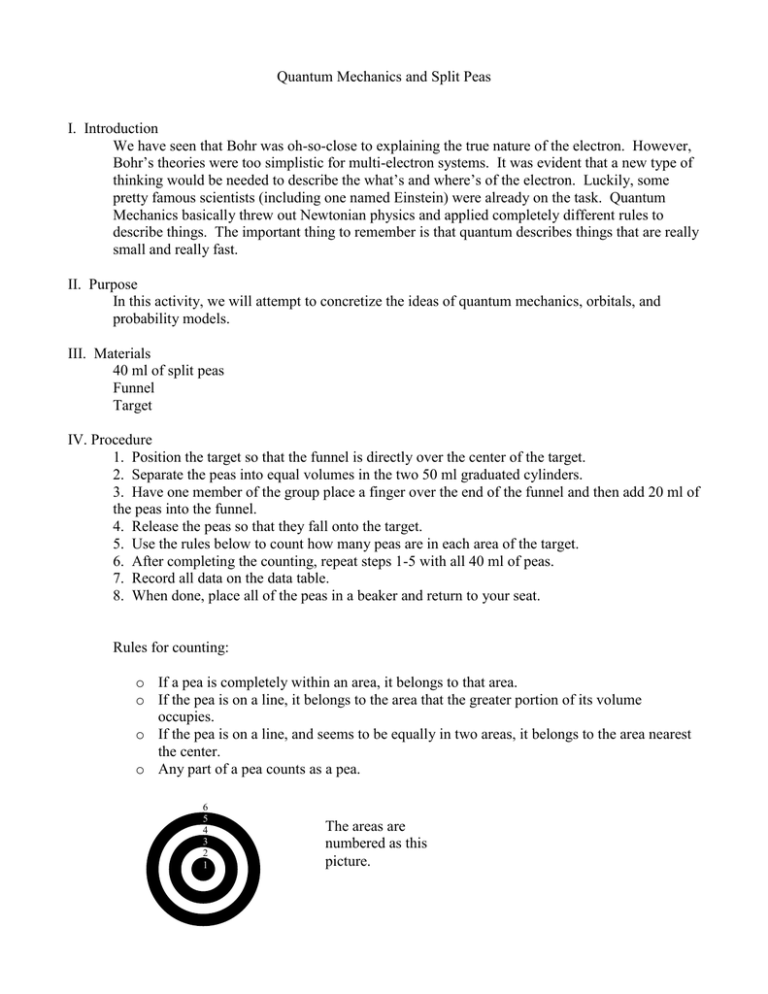
Quantum Mechanics and Split Peas I. Introduction We have seen that Bohr was oh-so-close to explaining the true nature of the electron. However, Bohr’s theories were too simplistic for multi-electron systems. It was evident that a new type of thinking would be needed to describe the what’s and where’s of the electron. Luckily, some pretty famous scientists (including one named Einstein) were already on the task. Quantum Mechanics basically threw out Newtonian physics and applied completely different rules to describe things. The important thing to remember is that quantum describes things that are really small and really fast. II. Purpose In this activity, we will attempt to concretize the ideas of quantum mechanics, orbitals, and probability models. III. Materials 40 ml of split peas Funnel Target IV. Procedure 1. Position the target so that the funnel is directly over the center of the target. 2. Separate the peas into equal volumes in the two 50 ml graduated cylinders. 3. Have one member of the group place a finger over the end of the funnel and then add 20 ml of the peas into the funnel. 4. Release the peas so that they fall onto the target. 5. Use the rules below to count how many peas are in each area of the target. 6. After completing the counting, repeat steps 1-5 with all 40 ml of peas. 7. Record all data on the data table. 8. When done, place all of the peas in a beaker and return to your seat. Rules for counting: o If a pea is completely within an area, it belongs to that area. o If the pea is on a line, it belongs to the area that the greater portion of its volume occupies. o If the pea is on a line, and seems to be equally in two areas, it belongs to the area nearest the center. o Any part of a pea counts as a pea. 6 5 4 3 2 1 The areas are numbered as this picture. Data Table: Area # 1 2 3 4 5 6 Run 1 # of peas % of total Area # 1 2 3 4 5 6 Total Run 2 # of peas % of total Total Questions Answer the following questions in complete sentences. 1. In the first run, which area did the most peas land in? 2. Did this change for the second run? 3. If you were to do this again, only you had to predict where 90% of the peas would fall, what would your prediction be? 4. Does your 90% prediction mean that every pea will fall where you think? 5. Explain how these results mimic the orbitals described in the quantum mechanical model of the atom.

